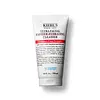What's inside
What's inside
 Key Ingredients
Key Ingredients

 Benefits
Benefits

 Concerns
Concerns

 Ingredients Side-by-side
Ingredients Side-by-side

Water
Skin ConditioningGlycerin
HumectantSodium Cocoyl Glycinate
CleansingSodium Chloride
MaskingGlycol Distearate
EmollientDisodium Laureth Sulfosuccinate
CleansingCitric Acid
BufferingGlyceryl Stearate
EmollientPEG-100 Stearate
Phenoxyethanol
PreservativeHydroxyacetophenone
AntioxidantKaolin
AbrasiveHydroxypropyl Starch Phosphate
Caprylyl Glycol
EmollientAcrylates Copolymer
Behenyl Alcohol
EmollientMagnesium Gluconate
Skin ConditioningSqualane
EmollientTrisodium Ethylenediamine Disuccinate
Panthenol
Skin ConditioningWater, Glycerin, Sodium Cocoyl Glycinate, Sodium Chloride, Glycol Distearate, Disodium Laureth Sulfosuccinate, Citric Acid, Glyceryl Stearate, PEG-100 Stearate, Phenoxyethanol, Hydroxyacetophenone, Kaolin, Hydroxypropyl Starch Phosphate, Caprylyl Glycol, Acrylates Copolymer, Behenyl Alcohol, Magnesium Gluconate, Squalane, Trisodium Ethylenediamine Disuccinate, Panthenol
 Reviews
Reviews

Ingredients Explained
These ingredients are found in both products.
Ingredients higher up in an ingredient list are typically present in a larger amount.
Citric Acid is an alpha hydroxy acid (AHA) naturally found in citrus fruits like oranges, lemons, and limes.
Like other AHAs, citric acid can exfoliate skin by breaking down the bonds that hold dead skin cells together. This helps reveal smoother and brighter skin underneath.
However, this exfoliating effect only happens at high concentrations (20%) which can be hard to find in cosmetic products.
Due to this, citric acid is usually included in small amounts as a pH adjuster. This helps keep products slightly more acidic and compatible with skin's natural pH.
In skincare formulas, citric acid can:
While it can provide some skin benefits, research shows lactic acid and glycolic acid are generally more effective and less irritating exfoliants.
Most citric acid used in skincare today is made by fermenting sugars (usually from molasses). This synthetic version is identical to the natural citrus form but easier to stabilize and use in formulations.
Read more about some other popular AHA's here:
Learn more about Citric AcidPhenoxyethanol is a preservative that has germicide, antimicrobial, and aromatic properties. Studies show that phenoxyethanol can prevent microbial growth. By itself, it has a scent that is similar to that of a rose.
It's often used in formulations along with Caprylyl Glycol to preserve the shelf life of products.
Water. It's the most common cosmetic ingredient of all. You'll usually see it at the top of ingredient lists, meaning that it makes up the largest part of the product.
So why is it so popular? Water most often acts as a solvent - this means that it helps dissolve other ingredients into the formulation.
You'll also recognize water as that liquid we all need to stay alive. If you see this, drink a glass of water. Stay hydrated!
Learn more about Water